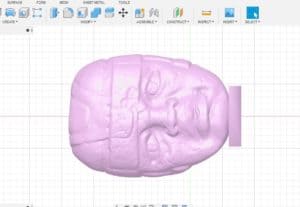Modal commands are an essential part of G-Code programming. They are commands that remain active until another command is given to cancel or replace them. In other words, they set a mode that remains in effect until it is changed. This feature allows for more efficient programming by reducing the number of commands needed to complete a task.
There are three types of modal commands: motion, plane selection, and cutter compensation. Motion commands set the speed and direction of the machine’s movement, while plane selection commands define the plane in which the machine will operate. Cutter compensation commands adjust the machine’s tool path to account for the size of the cutting tool. Understanding how these commands work and interact with each other is crucial to writing effective G-Code programs.
Modal Commands
Definition
Modal commands are G-codes that remain in effect until they are replaced by another modal command. They define the behavior of the machine during a machining operation and are used to set parameters such as feed rate, spindle speed, and coolant state. Modal commands are essential for efficient programming because they allow the programmer to specify a set of parameters that remain in effect until explicitly changed.
Examples
Some examples of modal commands include:
- G00/G01: These are the basic linear motion commands used to move the tool along a straight line. G00 is used for rapid positioning, while G01 is used for cutting.
- G02/G03: These are circular interpolation commands used to move the tool along a circular arc. G02 is used for clockwise arcs, while G03 is used for counterclockwise arcs.
- G20/G21: These commands set the units of measurement for the program. G20 specifies inches, while G21 specifies millimeters.
- G90/G91: These commands set the distance mode for the program. G90 specifies absolute distance mode, while G91 specifies incremental distance mode.
- M03/M04: These commands turn on the spindle in the clockwise (M03) or counterclockwise (M04) direction.
- M07/M08/M09: These commands control the state of the coolant system. M07 turns on mist coolant, M08 turns on flood coolant, and M09 turns off all coolant.
Modal commands are used in combination with other G-codes to create complex machining operations. For example, a typical drilling operation might use G00 to rapid to the starting position, G01 to move the tool down to the workpiece, and M03 to turn on the spindle. Once the drilling operation is complete, the programmer might use G00 to rapid the tool away from the workpiece and M05 to turn off the spindle.
In summary, modal commands are an essential part of G-code programming. They allow the programmer to specify a set of parameters that remain in effect until explicitly changed, making it possible to create complex machining operations with minimal code.
G-Code Programs
Overview
G-Code programs are sets of instructions that control CNC machines. They are written in a language called G-Code, which is a series of commands that tell the machine what to do. G-Code programs are used to create a wide range of products, from simple parts to complex assemblies.
Structure
G-Code programs are structured in a specific way. They begin with a program header, which contains information about the program and the machine it will be run on. The header is followed by a series of commands that tell the machine what to do.
Commands in a G-Code program are made up of a letter and a number. The letter indicates the type of command, and the number provides additional information. For example, the command G01 tells the machine to move in a straight line, while the command G02 tells the machine to move in a circular motion.
G-Code programs also include modal commands, which are commands that remain in effect until they are changed. For example, the command G90 sets the machine to use absolute coordinates, while the command G91 sets the machine to use relative coordinates.
In addition to the program header and commands, G-Code programs may also include comments. Comments are notes that are added to the program to provide additional information or to explain what a particular command does.
Overall, G-Code programs are an essential part of CNC machining. They allow users to create precise, complex parts with ease.
Modal Commands in G-Code Programs
Purpose
Modal commands in G-Code programs are used to define the state of the machine tool. These commands remain in effect until they are changed by another command. They allow a programmer to define the tool movement, feed rate, spindle speed, and coolant state in a single line of code. This reduces the amount of code required and makes the program easier to read and understand.
Implementation
Modal commands are implemented in G-Code programs by using a letter code followed by a number. The letter code defines the type of command, and the number defines the value of the command. For example, the letter code “G” is used to define a motion command, and the number following the G defines the type of motion.
Advantages
The use of modal commands in G-Code programs has several advantages. First, it reduces the amount of code required to define the state of the machine tool. This makes the program easier to read and understand. Second, it reduces the chance of errors in the program. If a command is not explicitly changed, it remains in effect. This means that the programmer does not need to worry about setting every parameter for every line of code. Finally, it allows for faster programming. Since the programmer does not need to explicitly set every parameter for every line of code, the program can be written more quickly.
In summary, modal commands in G-Code programs are used to define the state of the machine tool. They allow a programmer to define the tool movement, feed rate, spindle speed, and coolant state in a single line of code. This reduces the amount of code required and makes the program easier to read and understand. The use of modal commands has several advantages, including reducing the amount of code required, reducing the chance of errors, and allowing for faster programming.

